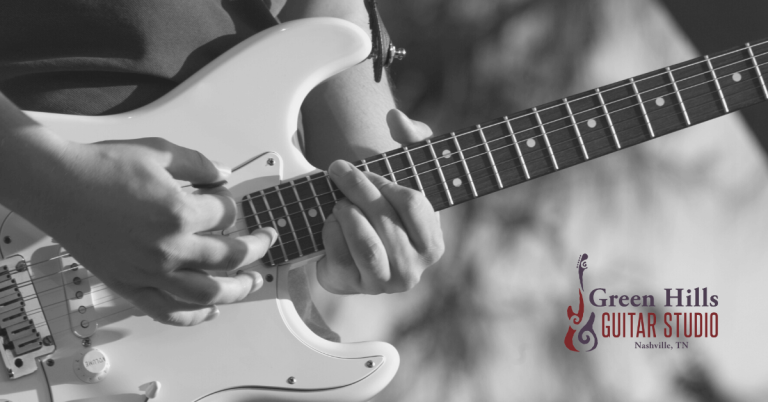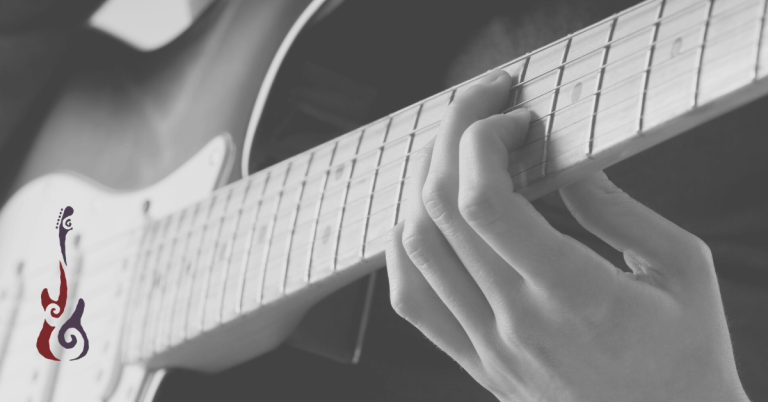5 Guitar Chord Progressions Every Player Should Know
Learning guitar isn’t about memorizing thousands of chords. It’s about recognizing the patterns that keep showing up — and learning how to use them in your own way.
Some patterns are so foundational that you’ll hear them everywhere, from Taylor Swift to The Beatles to your favorite indie band on Bandcamp.
Today, let’s crack open five of the most essential guitar chord progressions, talk about why they work, and show you some famous examples you can start playing right away.
Why Learning Common Chord Progressions Changes Everything
Most songs aren’t made from random chords. They’re built from tried-and-true progressions that work because they feel good.
Once you learn to recognize them, you’ll start seeing the matrix: songwriting becomes less about guesswork and more about instinct.
You can practice smarter, write faster, and jam better — without feeling like you’re reinventing the wheel whenever you pick up your guitar.
1. The I–V–vi–IV Progression (The Pop Powerhouse)
If you only learn one chord progression, make it this one.
Chords in C Major:
C – G – Am – F
Why it works:
This progression feels uplifting but emotional — it’s a classic “hopeful with a tinge of sadness” combo that hooks listeners.
Songs that use it:
- “With or Without You” – U2
- “Let It Be” – The Beatles
- “No Woman No Cry” – Bob Marley
- “Someone Like You” – Adele
Pro Tip:
Try playing this progression slowly with open chords, then speed it up to see how different the vibe becomes.
2. The ii–V–I Progression (The Jazz and Soul Secret Weapon)
This one’s everywhere in jazz, soul, and R&B. Smooth, satisfying, and endlessly recyclable.
Chords in C Major:
Dm – G – C
Why it works:
The tension between the ii and V chords resolves beautifully back to the I. It feels inevitable — like a story wrapping up just right.
Songs that use it:
- “Autumn Leaves” – Jazz Standard
- “Sunday Morning” – Maroon 5 (used in parts)
- “Fly Me to the Moon” – Frank Sinatra (variation)
Pro Tip:
When playing the ii-V-I chord progression, use seventh chords (Dm7 – G7 – Cmaj7) to get the full jazzy flavor.
3. The I–IV–V Progression (The Backbone of Rock, Country, and Blues)
Want to jam at a bonfire or dive bar? Master this one first.
Chords in C Major:
C – F – G
Why it works:
It’s simple. It’s bold. It moves the listener forward without ever feeling stale. This is the DNA of early rock and roll, country, and tons of blues tunes.
Songs that use it:
- “La Bamba” – Ritchie Valens
- “Twist and Shout” – The Beatles
- “Wild Thing” – The Troggs
- Pretty much every early Chuck Berry song
Pro Tip:
Experiment with 12-bar blues variations by repeating the I chord for 4 bars before moving to IV and V.
4. The vi–IV–I–V Progression (The Modern Hit Factory)
If you’ve listened to pop radio in the last 20 years, you’ve heard this progression hundreds of times.
Chords in C Major:
Am – F – C – G
Why it works:
Starting on the vi (minor) chord gives it a moody, emotional lift before resolving into the more hopeful major chords.
Songs that use it:
- “Apologize” – OneRepublic
- “Let Her Go” – Passenger
- “Demons” – Imagine Dragons
Pro Tip:
Practice strumming patterns that emphasize the backbeat for a more contemporary sound.
5. The I–vi–IV–V Progression (The Golden Oldie)
A retro-sounding progression that’s still just as potent today.
Chords in C Major:
C – Am – F – G
Why it works:
This one’s bright and heartfelt, balancing light and shade beautifully. It’s used in love songs, ballads, and doo-wop classics.
Songs that use it:
- “Earth Angel” – The Penguins
- “Stand by Me” – Ben E. King (similar vibe)
- “Duke of Earl” – Gene Chandler
Pro Tip:
Try arpeggiating the chords (picking the notes individually) instead of strumming to create a dreamier atmosphere.
How to Practice Chord Progressions (And Actually Make Progress)
Most guitar players practice chord progressions by repeating them over and over.
That’s fine — but it gets boring fast, and you stop improving.
Here’s a better approach to practicing chord progressions:
- Change Keys (Smartly): Instead of mindlessly switching keys, pick keys that challenge your current skill level. If you’ve mastered C and G major, try E major or B♭ major to push yourself.
- Use a Capo Creatively: Move the capo up the neck and experiment with how the same progression sounds in different registers. This trains your ear and keeps things fresh.
- Explore Different Rhythms: Play the same progression as a slow ballad, a quick shuffle, or a reggae groove. This improves your timing, feel, and musical adaptability.
- Add Embellishments: Hammer-ons, pull-offs, bass note walks, and sus chords can turn a basic progression into something uniquely yours.
- Write Your Own Songs: Use the progression as a creative springboard. Even if you only change a chord or two, you’ll start developing your songwriting instincts.
Pro Tip:
Record yourself playing the progression in different styles and listen back. This builds both awareness and confidence.
Start Playing Smarter, Not Harder
If you’re serious about leveling up your playing — whether you’re brand new or already writing songs — understanding chord progressions is one of the fastest ways to sound better now.
And here’s the thing: you don’t have to figure it out alone.
At Green Hills Guitar Studio in Nashville, we help players at every level not just learn songs, but understand them.
We offer:
- Guitar lessons in Nashville, TN
- Online lessons wherever you are
- Learn guitar online with self-paced courses
- All Access Pass for unlimited learning
Ready to play smarter?
Contact Green Hills Guitar Studio today and get started.






